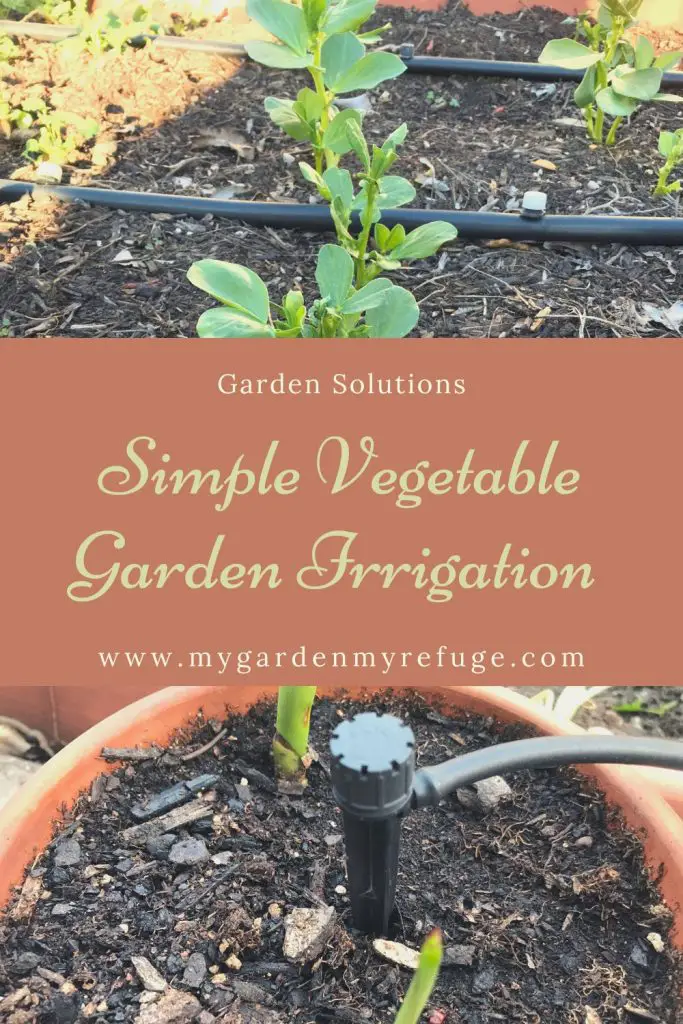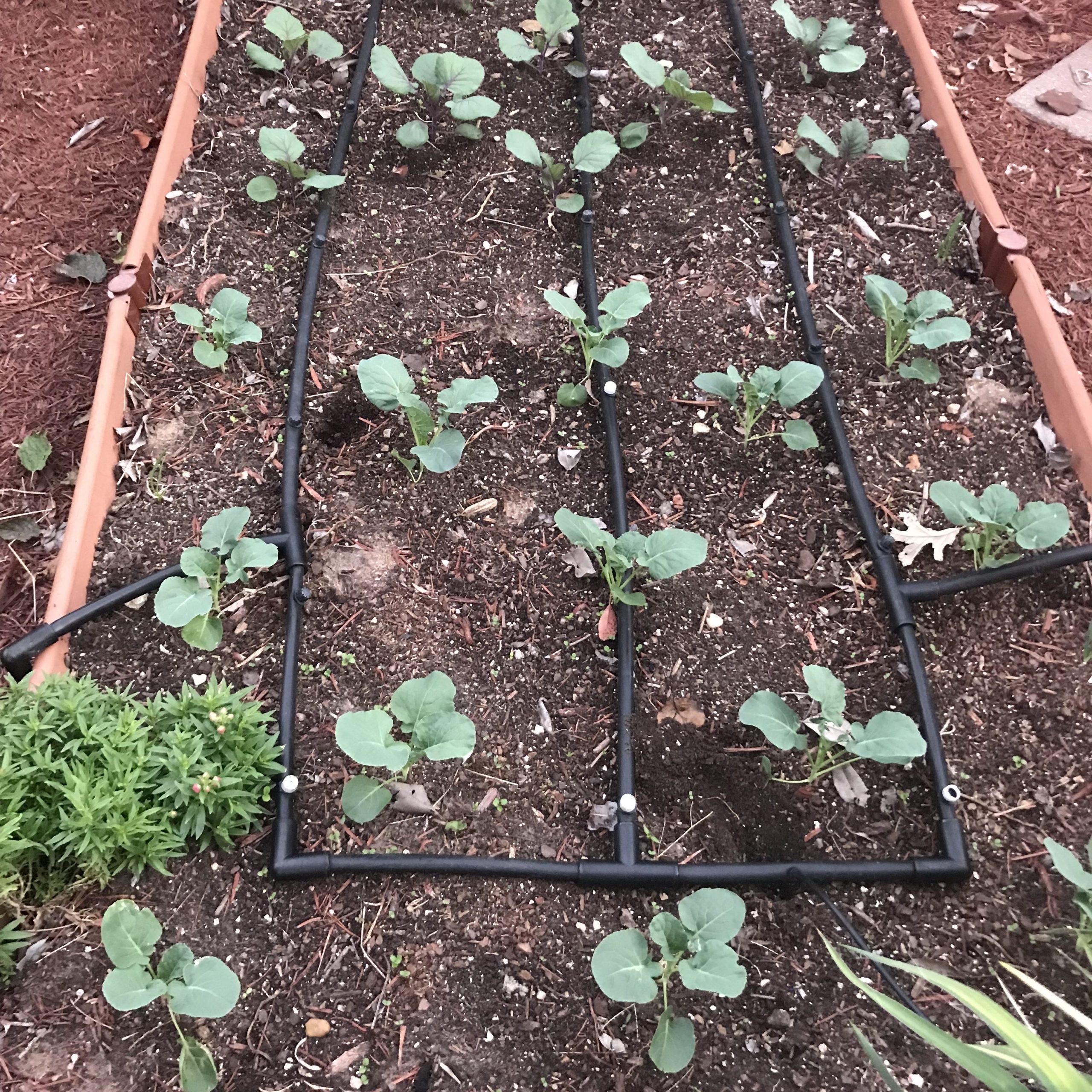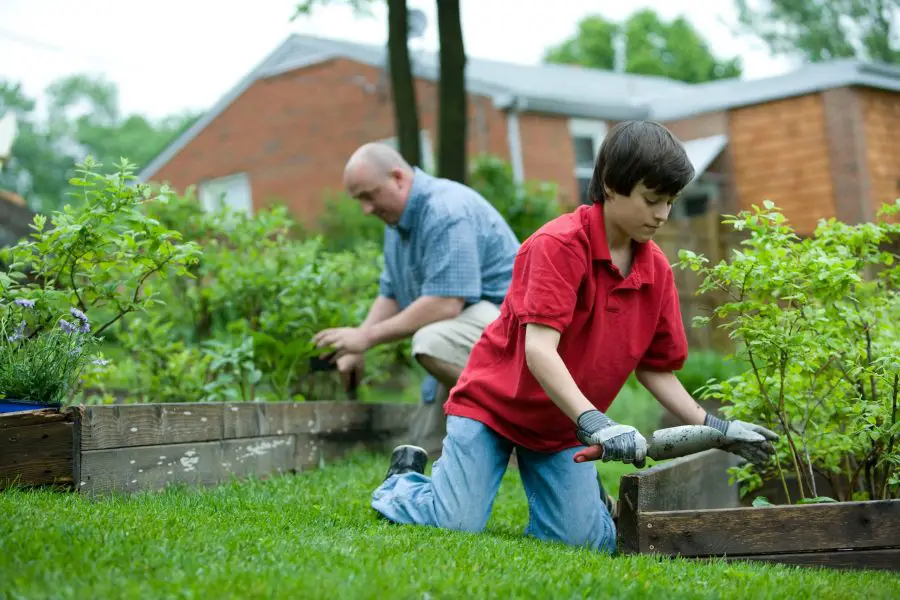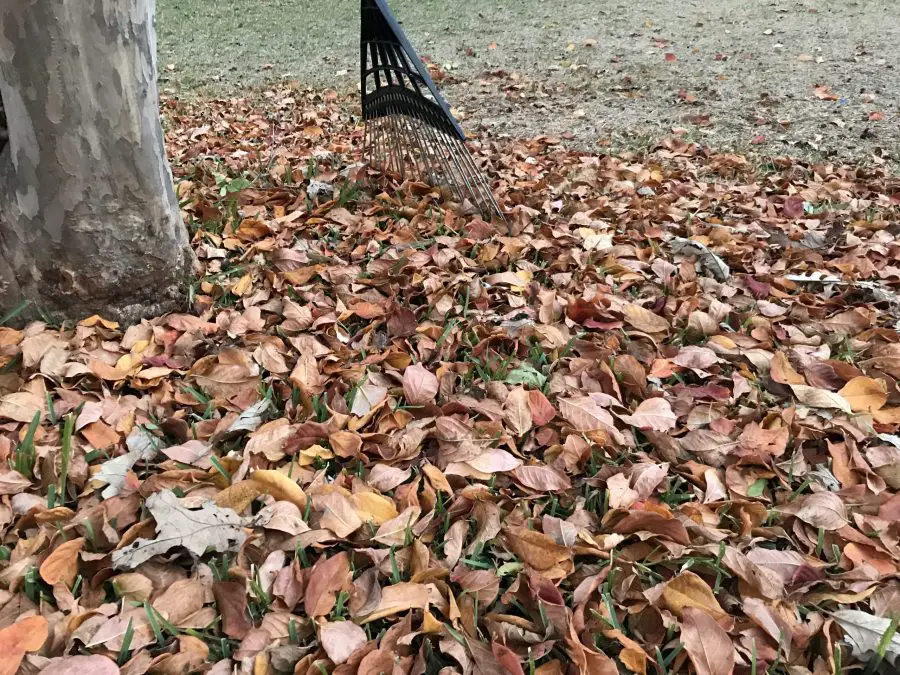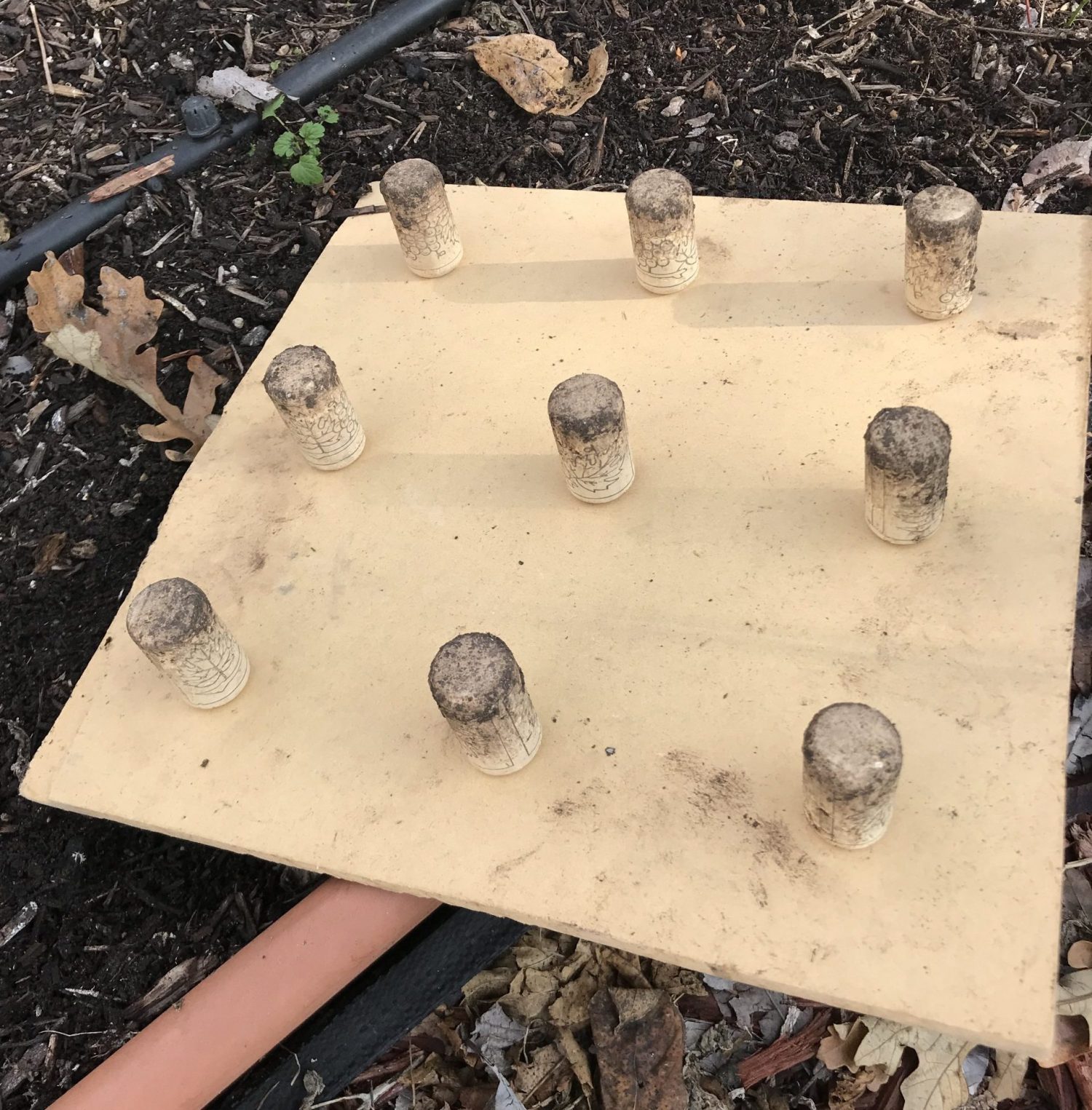Regular watering is one of the most critical tasks to keep your vegetable garden alive. Before installing a garden, ensure a nearby water source is easily accessible. In this post, we will learn about simple vegetable garden irrigation.
What is irrigation?
Irrigation is watering crops and landscapes using manufactured systems instead of relying only on rainfall. As a result, regions with little rain need irrigation systems to maintain their agriculture.
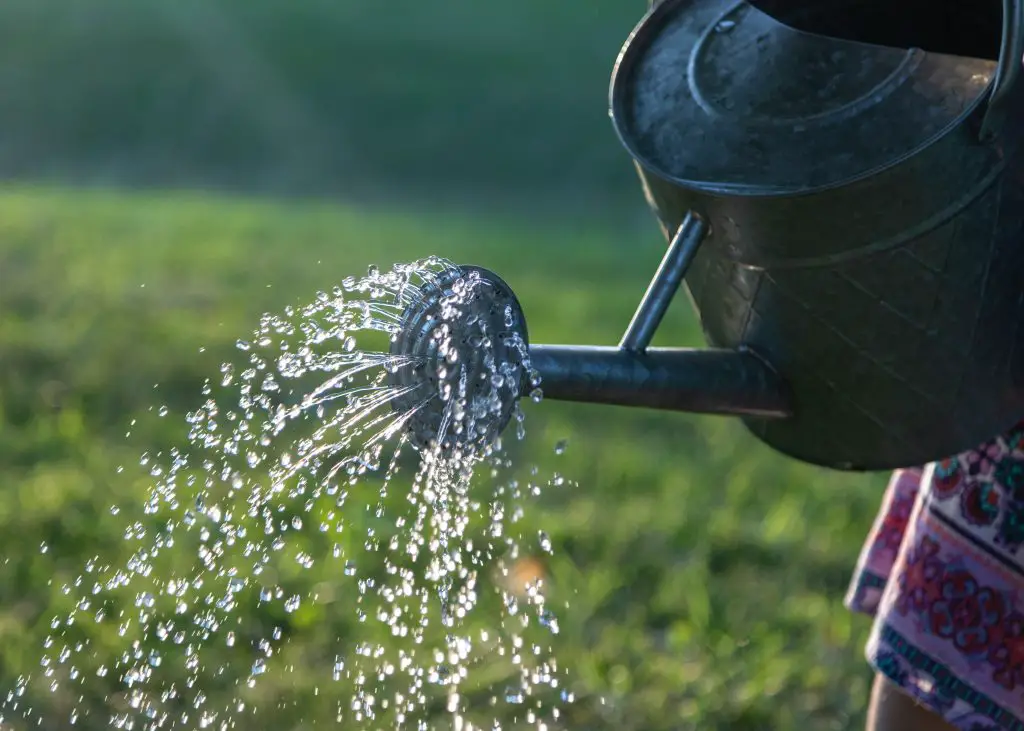
What are the types of irrigation to consider?
In a typical home garden setting, people rely on hand watering using a watering can or a hose. This method, however familiar, is not the most efficient for today’s lifestyle. Fortunately, more sustainable and reliable practices are available to home gardeners.
Sprinkler system-connected irrigation
The homeowner already has a sprinkler system installed in the yard in this option. The system is usually divided into zones to provide enough water for each area, including the vegetable garden.
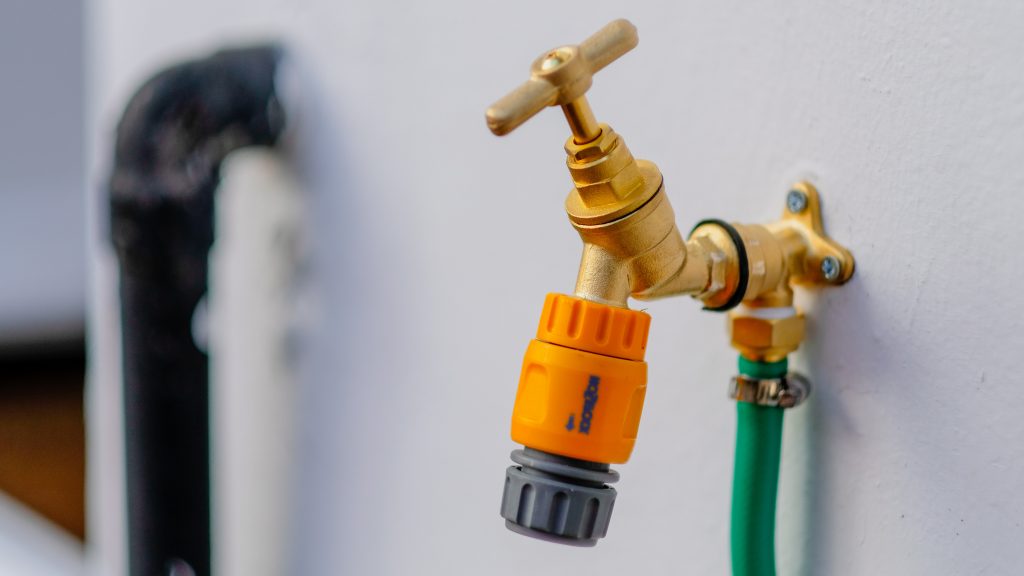
Spigot- attached systems
Visiting the irrigation aisle in the hardware store, you will notice parts and kits that covert your garden spigot into a drip system by attaching a pressure adapter and filter to it. These kits are handy for DIY gardeners since they come with all the parts you need in one package.
Why use irrigation systems?
Irrigation systems have many advantages over hand watering.
- Overhead watering may harm your plants, spreading fungal diseases.
- Using irrigation is more efficient as it delivers water to the right plant.
- Irrigation can be set on a timed program, saving you from the hassle of watering after work or when you are away.
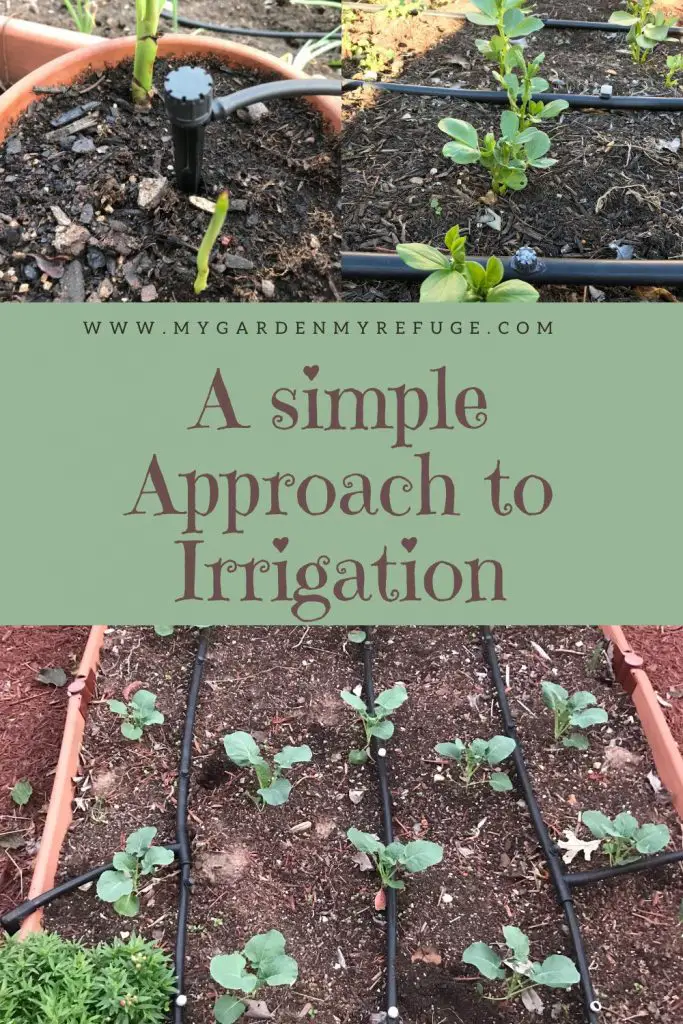
Different irrigation methods for the vegetable garden
For the home garden, there are three main irrigation methods: drip, micro-sprinkler, or soaker.
Drip irrigation
Drip is the most efficient way to water the vegetable garden. It uses 1/4 inch tubing with pre-set drip holes. Then, they connect to the mainline/ tube through the pressure adapter. The latter is either linked to a spigot or a sprinkler zone.
Using drip tubing saves you the hassle of piercing holes and plugging emitters. In addition, the spacing of the holes works with most conventional home gardening spacing methods, including Squarefoot gardening.
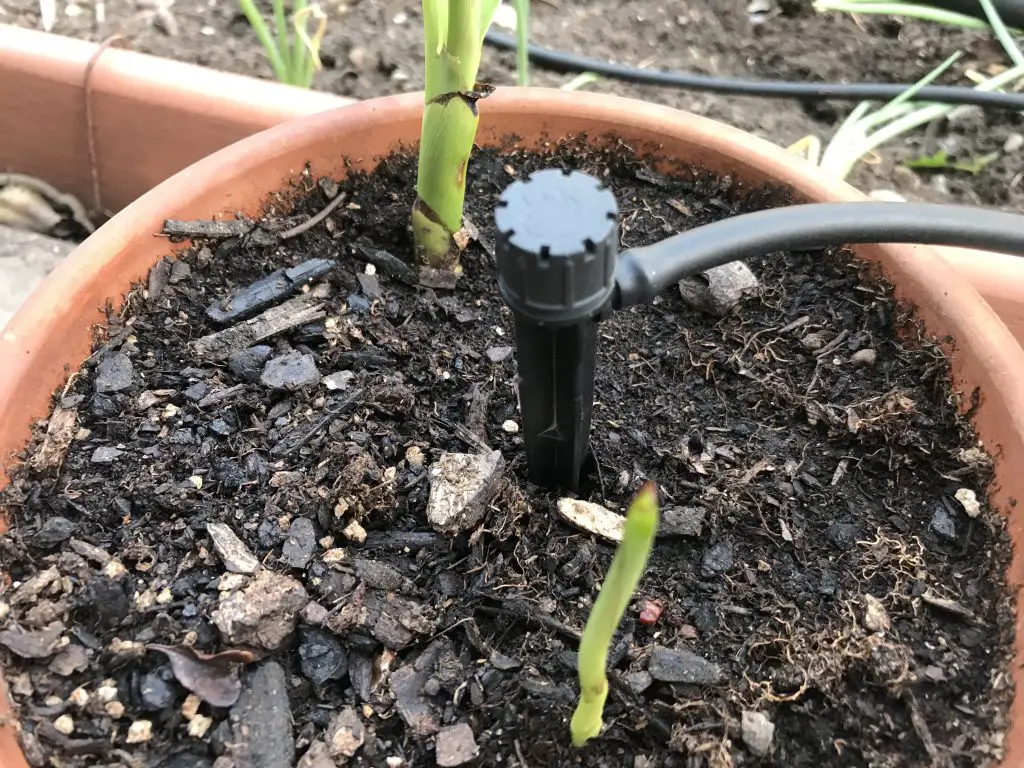
Micro-sprinklers
Micro sprinklers are another standard irrigation method used for vegetable gardens. It uses emitters that spray water, just like the sprinkler, but on a smaller scale. The water sprayed covers more surface area than the drip. The downside is that it encourages weeds, and water may not reach all the plants. There are two ways to set this system.
- Run a 1/4 inch tubing along each planted row and plug in an emitter at the distance you wish.
- Set the tubing along with the parameters of the planting bed, then place emitters at the corners.
Soaker hose
The setting of this system is similar to the previous ones; the difference is in the tubing. A soaker tube consists of porous material that allows water to seep through it, soaking the soil around the plant.
How long to run the watering system?
There is no definite answer to this question. It will depend on the soil texture and its ability to retain moisture. However, the rule of thumb is to experiment and test until you find the sweet spot.
Keep the system running for ten minutes for a start, then check soil moisture. Insert your thumb close to the plant and see how deep the water got. Increase the minutes until you reach 2.5 inches on moist soil. Keep in mind long, and deep watering is better than shallow watering.

How frequently to run the irrigation?
Watering frequency depends on the soil’s ability to retain moisture. For example, sandy soil will need more frequent watering than heavy clay soil. Vegetable garden soil should be balanced and rich in organic matter to help it retain moisture evenly and reduce the need for extra watering.
Seasonal water requirements also have a role in the frequency. For example, during the hot summer days, you may need to water daily, while in the winter season, that may drop to once a week. Watering frequency is also reduced by deep watering.
Irrigation system essentials for a vegetable garden
Here are the essential parts of setting up an irrigation system if you are not using a kit.
Pressure regulator
The pressure regulator is an essential piece in a drip system. It brings down the high pressure that runs the household water.
Some adapters attach to the hose faucet and others to the sprinkler head.
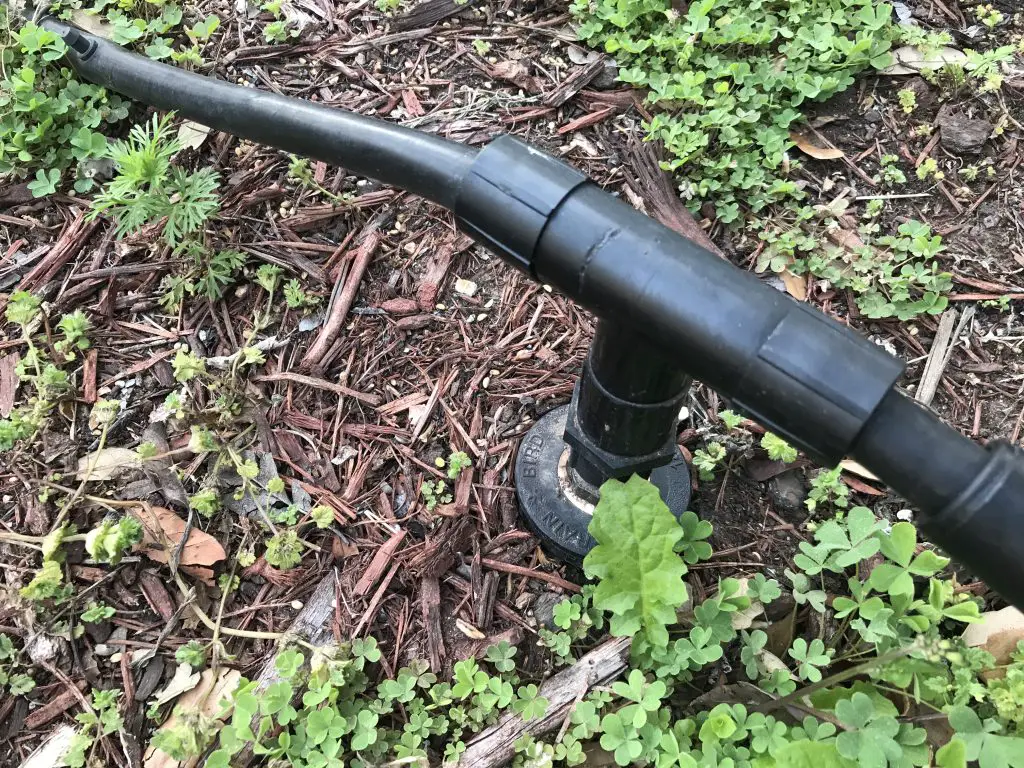
Water filter and backflow preventer
The filter is another piece to attach to the pressure regulator. It filters the water from debris and prevents it from flowing back into your house. The good news is that most pressure regulators come with a built-in filter and backflow preventer.
Timer
Timers help with programming watering schedules, especially when everyone is away. There are different timers in the market, from battery-operated, sun-powered, one-schedule, or multi-schedule systems.
Mainline tubing
The main tubing is a 1/2 inch tubing with no holes in it. The main line carries the water from the spigot/sprinkler head to the drip tubing.
Drip tubing
Drip tuning already has built-in drip holes.
Connectors
Connectors come in L, T, and straight shapes.
Emitters
If you decide to use micro-sprinklers or drip emitters, pay attention to the water flow. Each emitter has a certain amount of water for a certain amount of time.
Micro-tubing
Microtubing is the skinniest irrigation tubing. It is handy to get an emitter closer to a plant. They are commonly used to water potted plants.
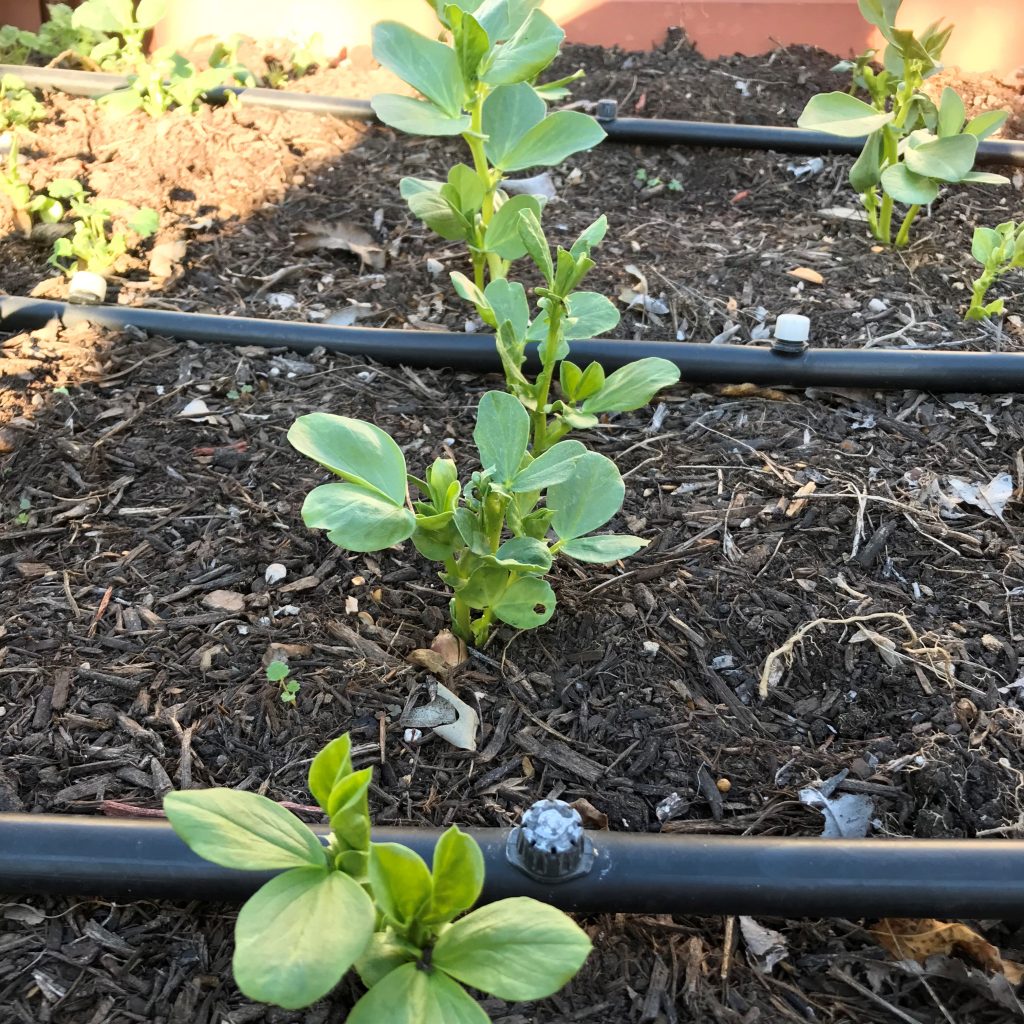
Troubleshooting your irrigation system
1) Water does not reach all the beds
Sometimes you notice that the farther plants are not getting enough water, and this is due to the decreasing water pressure as we get farther away from the water source.
If you are using a spigot, try to use the micro tubing near the plants to increase pressure. If using a sprinkler zone, ensure all the heads connected to this zone are closed. You may also create a looping design to have the water flowing from all directions.
2) Micro-sprinkler caps breaking
Micro-sprinkler caps may get brittle and fall apart due to weathering or rodents biting on them. Use good quality material and always have extra for replacement. As a side note, micro-sprinklers with back heads seem to last longer than the red ones.
3) No water coming out from the holes
Suppose no water flows from the emitters, most likely due to mineral build-up or debris. If the system in question connects to the sprinkler system, get the help of a professional. Otherwise, try to locate the clogged hole and use a thin needle to unclog it. You can also flush the system by opening the end side, then turn it on to let the water wash it off.
